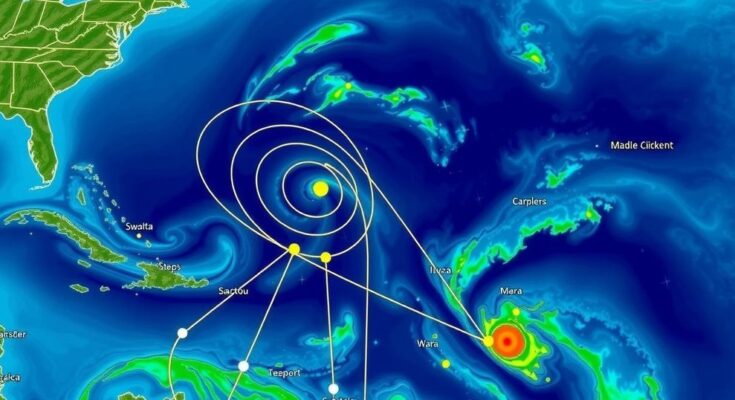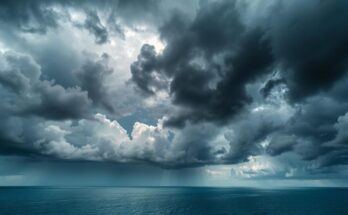Tropical Cyclone Jude formed in the Mozambique Channel, with wind speeds of 63 mph. Flash flooding is a risk for areas far from the storm’s center. The Southern Hemisphere experiences cyclones that rotate clockwise, impacting regions such as Madagascar and Australia. The cyclone season runs from October to May, peaking in late February and early March.
Tropical Cyclone Jude has recently formed in the Mozambique Channel, as confirmed by the Joint Typhoon Warning Center. This system has recorded sustained wind speeds reaching 63 miles per hour.
Rainfall associated with Tropical Cyclone Jude is anticipated to lead to flash flooding, which may affect areas located well inland and distant from the storm’s center. Notably, even storms of lesser strength can result in significant rainfall, causing potential flooding in low-lying regions.
Approximately 25% of the Earth’s tropical cyclones occur within the Southern Hemisphere. In this region, cyclones with sustained winds of 74 mph or higher are classified as such, whereas, in the Atlantic, they are termed hurricanes. A distinct feature is that cyclones in the Southern Hemisphere rotate in a clockwise direction, contrary to the counterclockwise spin of hurricanes.
The impact of cyclones is particularly felt in eastern Africa, notably Madagascar, and also along the western, northern, and eastern coastlines of Australia and neighboring islands. The cyclone season in this hemisphere contrasts with the rest of the world, generally commencing in late October and extending through May. Peaks in cyclone activity typically occur in late February and early March, although this can vary by region.
In summary, Tropical Cyclone Jude has emerged with notable wind speeds, raising concerns for flooding within its radius. Southern Hemisphere cyclones exhibit unique properties compared to their Atlantic counterparts, including differing classifications and rotation. The cyclone season primarily affects eastern Africa and surrounding regions, showcasing a distinct seasonal pattern opposed to other parts of the world.
Original Source: www.nytimes.com




